A stakeout pole is the best way to stop a kayak in shallow water. Unlike an anchor, a stakeout pole is light, low-profile and uses less line, making it quick and easy to stick in the sand or mud and tie off. As an added bonus, a stakeout pole has less chance of snagging the fishing line and costing a catch.
Any time you stop a kayak in current or waves, there is a risk of flipping the boat or falling overboard. Follow these 5 steps to stake out and stay dry, and learn what the pros think about stakeout poles vs. anchors.
5 Easy Steps to Use a Stakeout Pole
1 Pick the right pole for the water’s depth
Pick out a stakeout pole matching the depth of the water. Best models are between six and eight feet long. An aluminum pole is light and stiff with a machined point to pierce sand and mud. Loop a 20-foot piece of paracord to the pole as a tie-off.
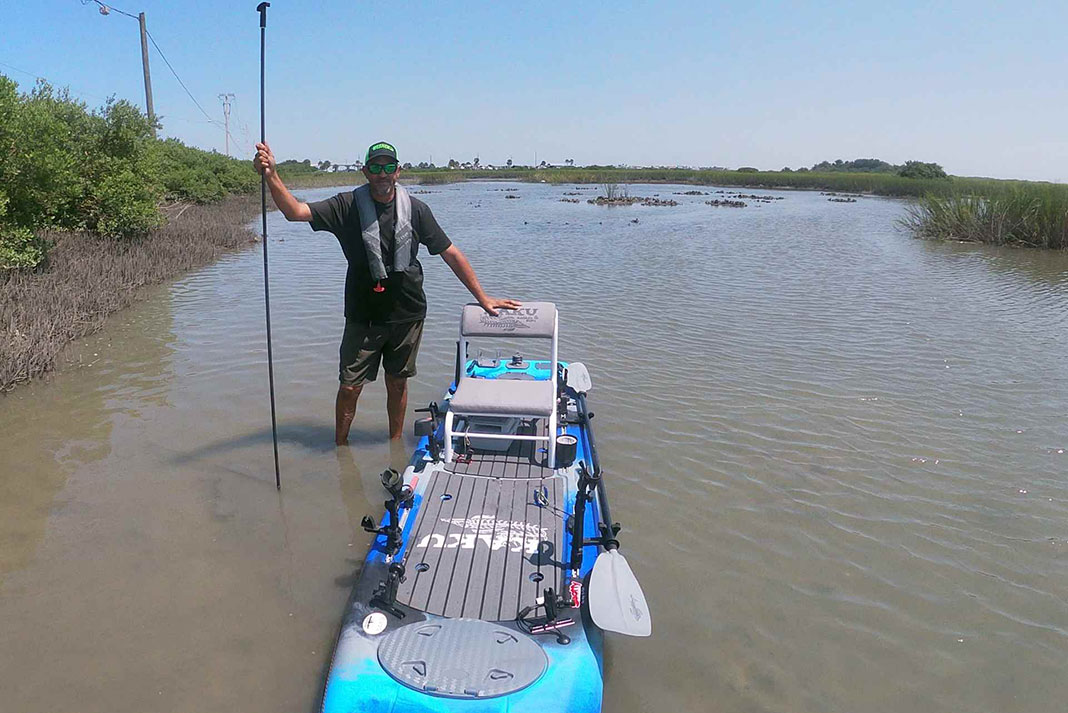
2 Mount the stakeout pole securely on your kayak
Find a secure mounting point on the kayak. A stakeout pole is awkward to store. Use a paddle holder or bungees to secure the pole horizontally to the deck when not in use.
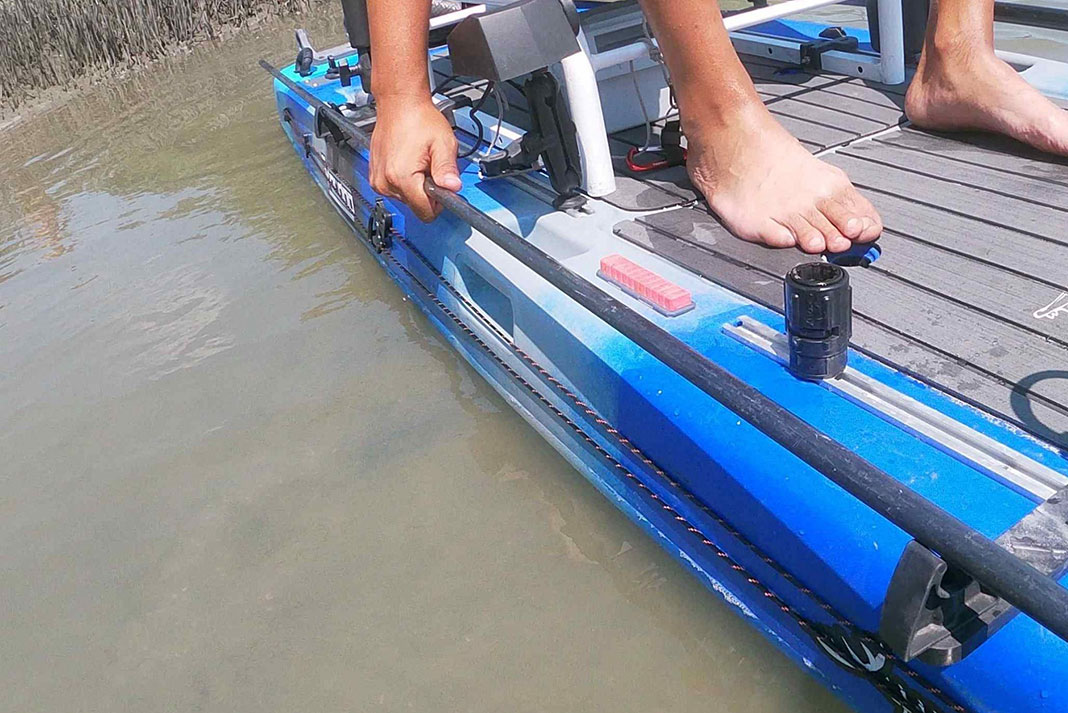
3 Use the pole as a depth finder
Use the pole as a depth finder. Feel along the bottom with the pole until it is shallow enough to stake into the sand or mud. Most of the time, its best to stake out in shallow water and fish deep water nearby.
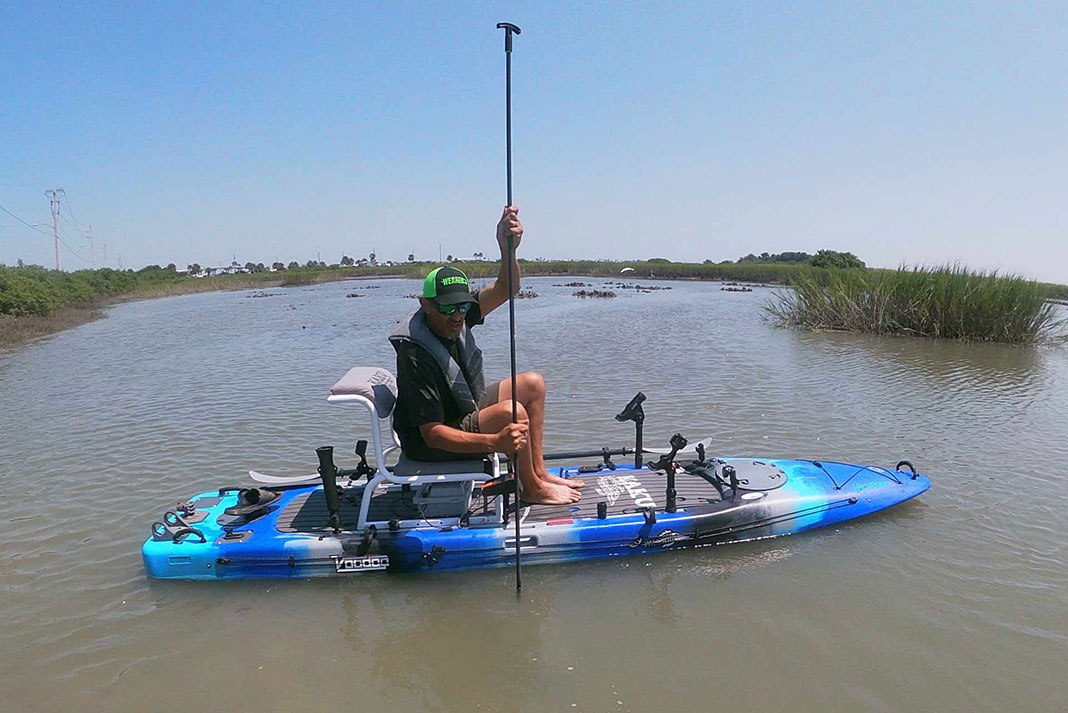
4 Once the soft bottom is detected, drive the stakeout pole deeper
Once I detect soft bottom with the pole, I jam the pointed tip into the bottom while shaking and rotating the pole to push it further into the sand. In most conditions, 10 to 12 inches should be deep enough. Always test to make sure the pole will hold the kayak in the current and wind before tying off.
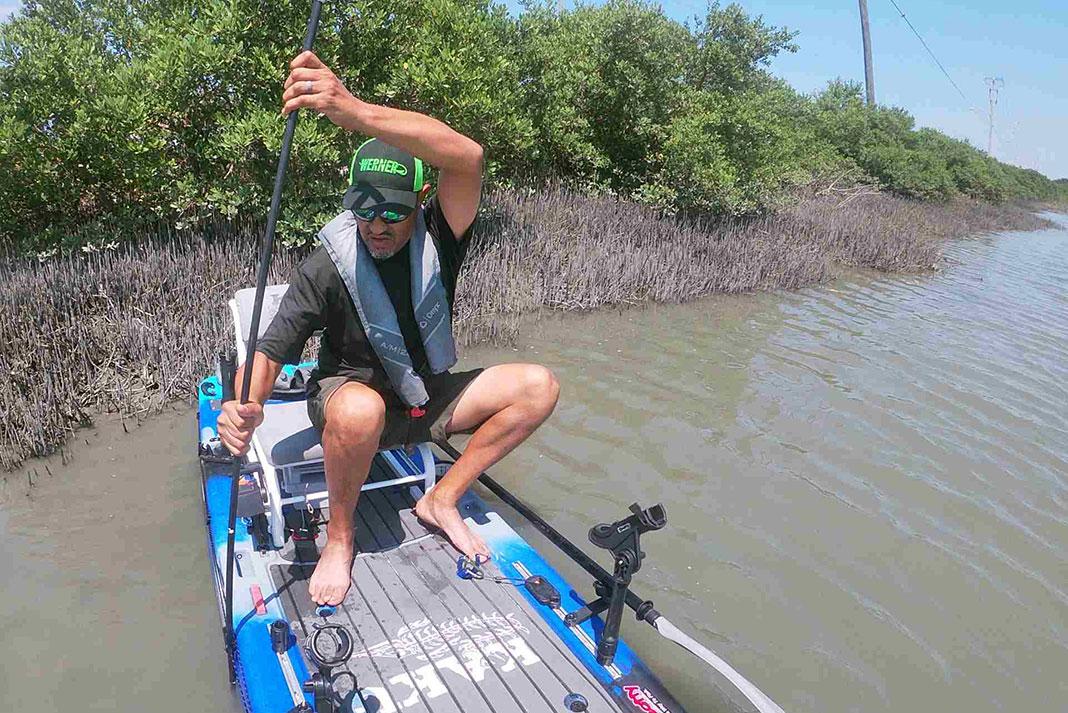
5 Use a carabiner to clip the paracord to the kayak
Use a carabiner to clip the paracord to the kayak. Depending on the wind and current, I attach the clip to a point that will hold the kayak in the direction I want to fish. Attach the cord to an anchor trolley for the most positioning options.
If I want to fish into the wind or current, I stake out from the bow. If the wind and current are in opposite directions, I may stake out from the middle of the kayak. Never run the stakeout pole through a scupper in the kayak deck. This could damage the plastic or get stuck in the scupper.
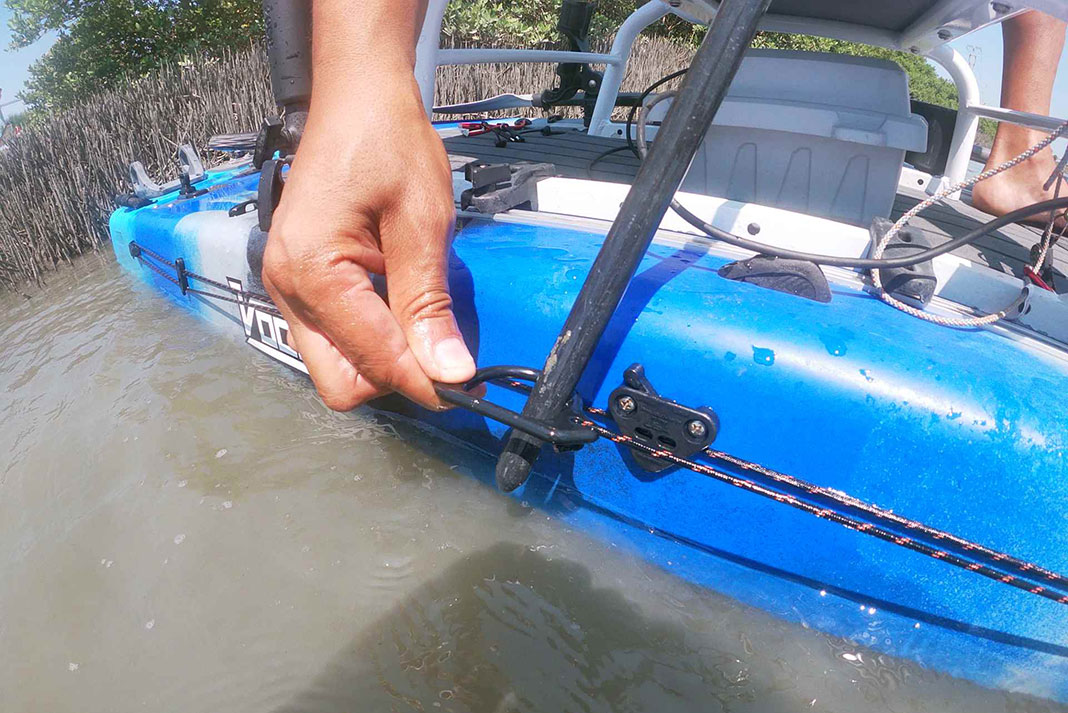
More Tips on Mastering Stakeout Poles
For better boat control in bad conditions, I use two stakeout poles: one on the bow and one in the stern. Rigging an anchor trolley on each side of the kayak makes it easier to use two poles. Two stakeout poles offer peace of mind if I leave the kayak to wade fish.
When it’s time to move, pull straight up with a slight twist back and forth to release the pole. To counter balance a stuck pole, tilt slightly to the opposite side of the kayak. Once the pole is back onboard, return it to the paddle clips to keep it out of the way.
Stakeout Poles Vs. Anchors
Whether it’s a matter of depth or a matter of speed, many anglers find their anchoring system and stick with it. But choosing the right anchoring setup to fit your needs will leave more time to focus on finding fish. Here’s what the pros have to say about which anchoring system they prefer, plus tips on how and when to use it.
John “Toast” Oast
Ocean Kayak pro staffer, founder of both the Pennsylvania Kayak Fishing Association and the Williamsburg Kayak Fishing Association in Virginia, and owner of Fishyaker.com
“When I need to remain stationary in flowing water, I typically use a stakeout pole if I cannot find a reliable eddy. If the water is not flowing, or if the flow rate is minimal I will use an anchor. Always be careful when anchoring in moving water, as the current can roll a kayak and even submerge a kayak when anchored off of the bow or stern.”
Jeff “Birdsnest” Herman
Jackson Kayak, NRS and Werner Paddles pro staffer, ACA certified instructor and writer
“Most of my time is spent flats-fishing on the Gulf Coast so a stakeout stick is my first choice. Tethered with a short 2-foot rope and some bungee chord, it does the trick, even in choppy water. When I head to deeper bay waters I use a small claw anchor with a longer rope and the previously mentioned bungee as a shock absorber.”
“Finally my near shore/BTB set up is 25+ feet of rope tethered to a bruce anchor and quick release clip. I have a float attached near the quick release clip on the anchor rope. The float allows you to easily find your anchor again after your sleigh ride is done!”
Rob Choi
Ocean Kayak, Werner Paddles and Maui Jim Sunglasses pro staffer and host of blog www.angling-addict.com
“A lot of the places I fish are too deep for stakeout poles, so it’s mostly anchors for me.”
Brandon Barton
Hobie pro staffer, a member of the Gulf Coast Kayak Fishing Association and Heroes On The Water
“I like to use the 8-foot ParkNPole by Yakattack. The ParkNPole works great as a stake out pole and even doubles as a push pole. They are very light and can be easy attached to the side of my Hobie Outback. The stakeout pole style anchoring system work great in mud or sandy bottoms and can be used with an anchor trolley system or can be pushed down through the scupper holes.”
Kwanza “Kayaking” Henderson
Ocean Kayak, Victory Lures and Rat-L-Trap pro staffer, sponsored by Trunk Bangga music
“I like using the ParkNPole by YakAttack. because it’s very easy to use. I don’t have to worry about it getting stuck at the bottom and trying to free it from rocks or coral. I’m usually fishing inshore spots that’s not really deep and has sandy/muddy bottom. Grass flats as well. The stakeout pole is extremely convenient and not an hassle to pick up and move to the next spot. I’ll use a regular anchor only if I’m fishing out of an inlet or an oyster bar, but I do prefer the convenience of the ParkNPole.”
This article was first published in the Early Summer 2020 issue of Kayak Angler Magazine. Subscribe to Kayak Angler Magazine’s print and digital editions, or browse the archives.
Follow these simple steps with a stakeout pole and you’ll be stuck like Chuck. | Feature photo: Will Niemann


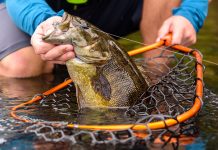
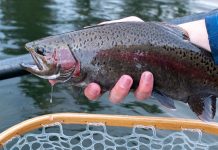
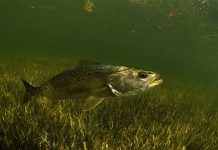


Native kayakers, in traditional boats, would drift into a kelp bed and, using their paddle, they’d grab a kelp frond and lay it across their bow, a few on each side. This would keep the kayak from drifting, and the kelp forests were calming waters allowing them to even sleep in their kayak. For kayak fishermen, using a weed bed – along the edges, for example – will hold your boat in place against moderate currents and will enable you to cast out along the edge or into the week bed. Kayak fishing has been around for centuries, anglers are just learning how to be kayakers.